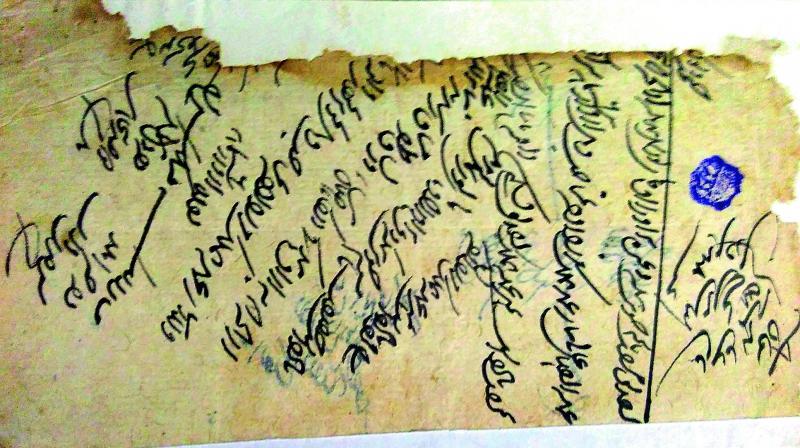Mughal documents are full of tongue-twisters
The documents have links to each other and they are in chronological order Date wise, month wise and regnal year wise.

Hyderabad: The Persian jargon used by the Mughal administration was literally tongue-twisters. Some of such terms are Yaddasht-i-Ahkam-i-Muqaddas (collection of imperial orders), Parwana or Parwancha Izafa mansab, Kami-i-Mansab (orders issued by King or higher authorities), Dastak-i-Rahdari (Passport), Fihrist-i-Mulaziman (List of imperial servants), IItimas (Petit-ion), Siyaha-Huzur (Proceedings of the Provincial court), Roznamcha-i-Waqai (Daily news report, spy), Qabzul Wasil (Pay bill), Arz-o-Chihra (descritive roll of horse and personnel), Fautinama (death certificate), Saqtinama (death certificate of horse).
“The documents have links to each other and they are in chronological order — Date wise, month wise and regnal year wise. Then rulers issued orders on all important matters written on hand made paper. The large decorated ones were usually farman or imperial orders,” says Md Abdul Raqeeb, Assistant Director, Telangana State Archives and Research Institute.
Among Daftars (administrative offices), the most important was Daftar-i-Diwani. This system continued to the Nizam era from the Mughal rulers. There were 14 Daftars during early Asaf Jahi rule. Daftars consist (contained) of administrative and executive orders, correspondence, files, compilations of official information, sanads (certificates) among others. They were in custody of select Jagirdar families in Hyderabad, who received grants of Jagir, cash for maintenance of records those days. Jagirdars were also designated Daftardars.

